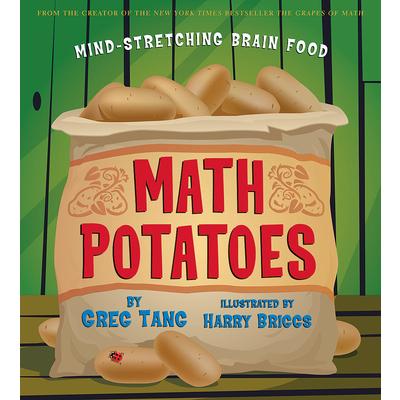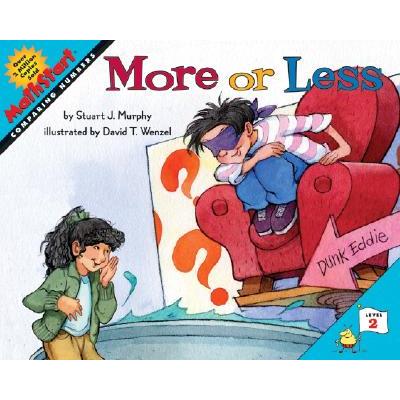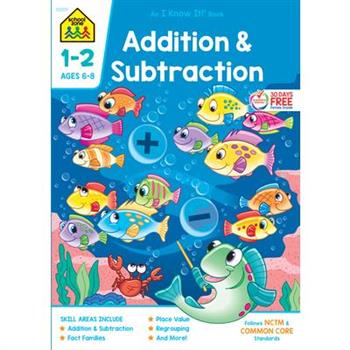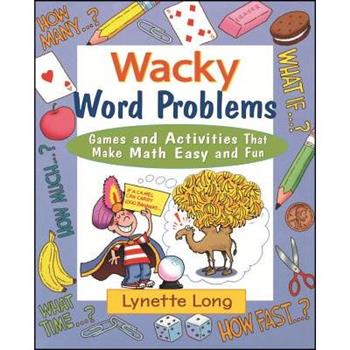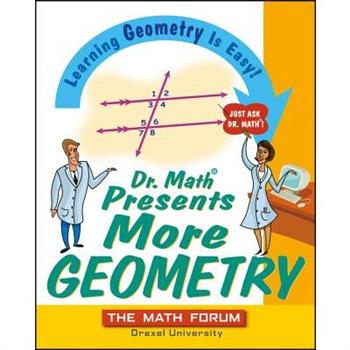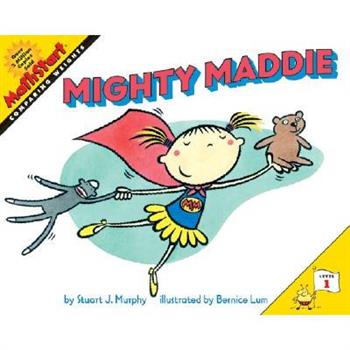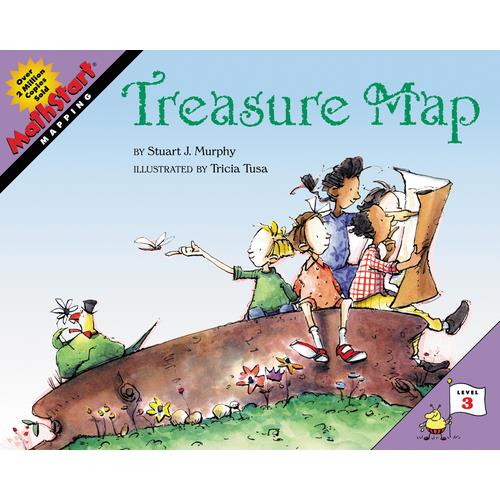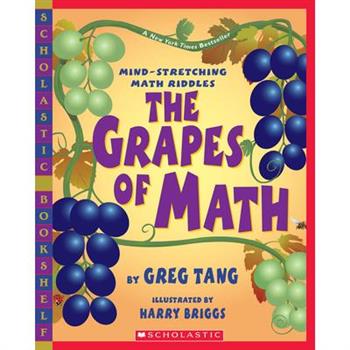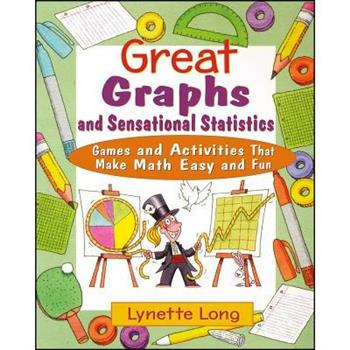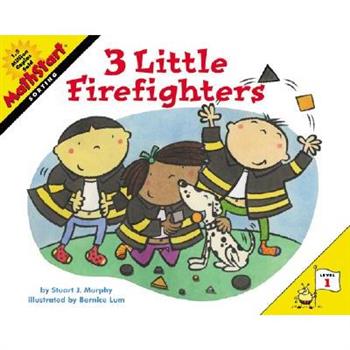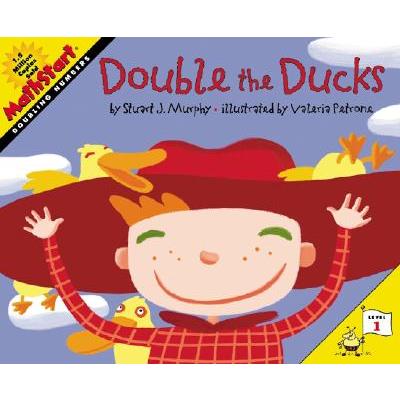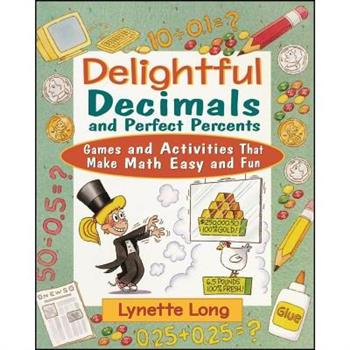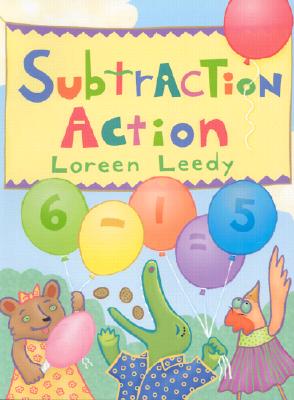Math Potatoes
Readers who have graduated from THE GRAPES OF MATH will find new, more advanced math challenges. Greg Tang is back with his bestselling approach to addition and subtraction: problem solving. By solving challenges that encourage kids to "group" numbers rather than memorize formulas, even the most reluctant math learners are inspired to see math in a whole new way! Math Potatoes is full of Tang and Briggs' trademark humor, wit, and extraordinary creativity. Tang has proven over and over that math can be fun, and this new addition to his acclaimed series of mind-stretching math riddles is sure to be another hit.
More or Less
"Kids, young and old, fall in love with math when they see how real-life and effortless it becomes thanks to these books." --Kimberly D. Mueller, Ed.D., First Grade Teacher, Ashbrook School, Lumberton NJMore or Less is perfect for teaching comparing numbers to first, second, and third graders. Eddie has a booth at the school fair, guessing people's ages. He hasn't guessed wrong yet, but if he does, he gets dunked. Can Eddie keep guessing right--and keep from getting wet? Comparing whole numbers and understanding what's more and what's less are a big part of Eddie's strategy, and an important math skill for young readers to learn.Kids will love the story and the funny illustrations by David T. Wenzel. Parents and other educators will love how the story and pictures make understanding comparisons a breeze--as well as the concrete examples of how math works! The book contains activities for adults to do with kids to extend math into their own lives! Math skills are life skills, and the MathStart series supports success!This award-winning series by Stuart J. Murphy teaches math through stories and visual models63 books divided into three levels with 21 books in eachFun activities kids will love are included to help parents and teachers emphasize the lessonsEngaging and relatable stories, with each story revolving around practical applications of the math concept presentedLively art from top-notch illustratorsCharts and other visual representations help children understand how the math works and promote deeper comprehensionMathStart's unique combination of stories, illustrations, and visual models helps teachers and parents in the teaching of math and provides all children with the opportunity to succeed.The math concepts taught in MathStart books conform to state and national standards. Level 1 is Pre-K-Kindergarten; Level 2 is Grades 1-3; Level 3 is Grades 2-4. The series follows math topics across grades so there is a foundational path to learning that runs through the levels.Help kids with their math skills plus their reading skills with the engaging and fun MathStart series!
Addition & Subtraction 1-2 Deluxe Edition Workbook
It's a fact! When your child understands and develops key skills, math can be more fun and a lot less stressful. In Addition & Subtraction Grades 1-2 workbook, you'll find hundreds of math facts for fast, fun learning, with clear instructions and step-by step examples for you and your child to follow. The workbook is aligned with the Common Core State Standards for Mathematics a comprehensive and progressive set of learning objectives created to help students succeed in math. At the bottom of each workbook page is a cross-reference to the Common Core grade level and "domain" or skill area that the activity practices. The workbook is also consistent with Principles and Standards for School Mathematics, a publication by the National Council for Teachers of Mathematics (NCTM), and it is compatible with Singapore math pedagogy. The lessons are planned in learning sequence; skills introduced in one lesson build on those taught in previous lessons. It's a perfect way to introduce, review, and maintain essential math skills.
Patterns Across the Curriculum Grade 2
Meet state-specific standards with this unique approach to comprehension! The focus is comprehension; the vehicle is poetry! Explicit teaching instructions make it easy for every teacher to introduce students to poetry in a non-threatening environment. Readers are asked to respond to multiple-choice comprehension questions presented in standardized test format, plus one short answer question. Correlated to state-specific standards, the poems and comprehension activities that follow prepare students for standardized tests that include poetry in the reading assessment sections. Three Things You Need to Know About This Series ? This unique poetry series focuses first on basic comprehension skills through the use of standard, multiple-choice formatted questions. ? Poems and activities have been selected and designed to meet state-specific standards identified on page 5 of each book. ? Teacher's instructions are systematic and explicit, making it easy to introduce and incorporat
Patterns Across the Curriculum Grade 3
Meet state-specific standards with this unique approach to comprehension! The focus is comprehension; the vehicle is poetry! Explicit teaching instructions make it easy for every teacher to introduce students to poetry in a non-threatening environment. Readers are asked to respond to multiple-choice comprehension questions presented in standardized test format, plus one short answer question. Correlated to state-specific standards, the poems and comprehension activities that follow prepare students for standardized tests that include poetry in the reading assessment sections. Three Things You Need to Know About This Series ? This unique poetry series focuses first on basic comprehension skills through the use of standard, multiple-choice formatted questions. ? Poems and activities have been selected and designed to meet state-specific standards identified on page 5 of each book. ? Teacher's instructions are systematic and explicit, making it easy to introduce and incorporat
Wacky Word Problems
Don't Just Learn Word Problems... Master Them! Brimming with fun and educational games and activities, the Magical Math series provides everything you need to know to become a master of mathematics! In each of these books, Lynette Long uses her won unique style to help you truly understand mathematical concepts with common objects such as playing cards, dice, coins, and every mathematician's basic tools: paper and pencil. Inside Wacky Word Problems, you'll discover how to decode many different types of word problems-from counting, logic, and percentage problems to distance, algebra, geometry, and graphing problems-in order to solve real-world dilemmas. While you play exciting games like Measurement Jeopardy and Percentage War, you'll learn how to identify word cues, develop reasoning skill, s and spot key formulas that will help you solve any problem with ease. You'll also boost your math skills as you enter into crazy contests with your friends, create mystery word problems, and play word-problem charades-and have a great time doing it! So why wait? Jump right in and find out how easy it is to become a word-problem master! Also available in this series: Dazzling Division, Delightful Decimals and Perfect Percents, Fabulous Fractions, Groovy Geometry, Marvelous Multiplication, and Measurement Mania, all from Wiley.
Dr. Math Presents More Geometry
You, too, can understand geometry -- just ask Dr. Math! Are things starting to get tougher in geometry class? Don't panic. Dr. Math--the popular online math resource--is here to help you figure out even the trickiest of your geometry problems. Students just like you have been turning to Dr. Math for years asking questions about math problems, and the math doctors at The Math Forum have helped them find the answers with lots of clear explanations and helpful hints. Now, with Dr. Math Presents More Geometry, you'll learn just what it takes to succeed in this subject. You'll find the answers to dozens of real questions from students in a typical geometry class. You'll also find plenty of hints and shortcuts for using coordinate geometry, finding angle relationships, and working with circles. Pretty soon, everything from the Pythagorean theorem to logic and proofs will make more sense. Plus, you'll get plenty of tips for working with all kinds of real-life problems. You won't find a better explanation of high school geometry anywhere!
Mathematics, Test Preperation Blackline Master Answer Key Level 6
Mighty Maddie
"Kids, young and old, fall in love with math when they see how real-life and effortless it becomes thanks to these books." --Kimberly D. Mueller, Ed.D., First Grade Teacher, Ashbrook School, Lumberton NJMighty Maddie is perfect for teaching comparing weights to pre-K through kindergarteners. Maddie's room is a mess. Maddie's toys are everywhere. And Maddie has to clean them up before her birthday party starts. This looks like a job for MIGHTY MADDIE! Faster than a speeding bullet, more powerful than a vacuum cleaner, Mighty Maddie, the room-cleaning superhero, gives readers a playful lesson about the difference between light and heavy.Kids will love the story and the funny illustrations by Bernice Lum. Parents and other educators will love how the story and pictures make understanding comparisons a breeze--as well as the concrete examples of how math works! The book contains activities for adults to do with kids to extend math into their own lives! Math skills are life skills, and the MathStart series supports success!This award-winning series by Stuart J. Murphy teaches math through stories and visual models63 books divided into three levels with 21 books in eachFun activities kids will love are included to help parents and teachers emphasize the lessonsEngaging and relatable stories, with each story revolving around practical applications of the math concept presentedLively art from top-notch illustratorsCharts and other visual representations help children understand how the math works and promote deeper comprehensionMathStart's unique combination of stories, illustrations, and visual models helps teachers and parents in the teaching of math and provides all children with the opportunity to succeed.The math concepts taught in MathStart books conform to state and national standards. Level 1 is Pre-K-Kindergarten; Level 2 is Grades 1-3; Level 3 is Grades 2-4. The series follows math topics across grades so there is a foundational path to learning that runs through the levels.Help kids with their math skills plus their reading skills with the engaging and fun MathStart series!
Treasure Map
"Kids, young and old, fall in love with math when they see how real-life and effortless it becomes thanks to these books." --Kimberly D. Mueller, Ed.D., First Grade Teacher, Ashbrook School, Lumberton NJTreasure Map is perfect for teaching mapping to second, third, and fourth graders. Matthew has found a treasure map, and soon the Elm Street Kids' Club is off on a quest. The map guides them into a wonderful, magical world, but it's the real-life math skills of understanding distance, scale, direction, and symbols that will help Matthew, Sheri, Meg, Danny, and Jed--with some assistance from Petey the parrot--find a treasure hidden fifty years ago.Kids will love the story and the funny illustrations by Tricia Tusa. Parents and other educators will love how the story and pictures make understanding comparisons a breeze--as well as the concrete examples of how math works! The book contains activities for adults to do with kids to extend math into their own lives! Math skills are life skills, and the MathStart series supports success!This award-winning series by Stuart J. Murphy teaches math through stories and visual models63 books divided into three levels with 21 books in eachFun activities kids will love are included to help parents and teachers emphasize the lessonsEngaging and relatable stories, with each story revolving around practical applications of the math concept presentedLively art from top-notch illustratorsCharts and other visual representations help children understand how the math works and promote deeper comprehensionMathStart's unique combination of stories, illustrations, and visual models helps teachers and parents in the teaching of math and provides all children with the opportunity to succeed.The math concepts taught in MathStart books conform to state and national standards. Level 1 is Pre-K-Kindergarten; Level 2 is Grades 1-3; Level 3 is Grades 2-4. The series follows math topics across grades so there is a foundational path to learning that runs through the levels.Help kids with their math skills plus their reading skills with the engaging and fun MathStart series!
Algebra 2, Grades 9-12 Test Preparation and Practice Workbook
Grapes of Math: Mind-Stretching Math Riddles
Let Scholastic Bookshelf be your guide through the whole range of your child's experiences-laugh with them, learn with them, read with them! Eight classic, best-selling titles are available now!Category: Math Skills"How many grapes are on the vine? Counting each takes too much time. Never fear, I have a hunchThere is a match for every bunch!"Greg Tang, a lifelong lover of math, shares the techniques that have helped him solve problems in the most creative ways! Harry Briggs's vibrant & inviting illustrations create a perfect environment for these innovative games. So open your mind-and have fun!"This...clever math book uses rhyming couplets... riddles...visual clues to help the reader find new ways to group numbers for quick counting...A winning addition!" --Kirkus
Matematicas, Grade 1 Problem Solving & Reading Strategies Workbook
Great Graphs and Sensational Statistics
Don't Just Learn Great Graphs and Statistics... Master Them! Brimming with fun and educational games and activities, the Magical Math series provides everything you need to know to become a master of mathematics! In each of these books, Lynette Long uses her own unique style to help you truly understand mathematical concepts as you use common objects such as playing cards, dice, coins, and every mathematician's basic, essential tools: paper and pencil. Inside Great Graphs and Sensational Statistics, you'll learn the basics of pictographs, bar graphs, pie charts, line graphs, and map charts, and you'll see how they make information easy to understand. You'll jump into statistics, where you'll discover how to figure out the average test score on your spelling tests, how to tell the difference between percent and percentile, and how to rank order a group of numbers. You'll also practice your new math skills with such fun activities as Dangling Spoons, Weather Bingo, Tower Tallies, and Color Feud. Track the mail, test the memory of your friends, do a sleep study, and much more as you learn how graphs and statistics can reveal the world around you.
3 Little Firefighters
"Kids, young and old, fall in love with math when they see how real-life and effortless it becomes thanks to these books." --Kimberly D. Mueller, Ed.D., First Grade Teacher, Ashbrook School, Lumberton NJ3 Little Firefighters is perfect for teaching sorting to pre-K through kindergartners. Three firefighters scramble to find 3 sets of matching buttons before the big parade starts. Kids will love the story and the illustrations by Bernice Lum. Parents and educators will love how the story and pictures make understanding the math concepts a breeze--as well as the concrete examples of how math works. The book contains activities for adults to do with kids to extend math into their own lives.Math skills are life skills, and the MathStart series supports success!This award-winning series by Stuart J. Murphy teaches math through stories and visual models63 books divided into three levels with 21 books in eachFun activities kids will love are included to help parents and teachers emphasize the lessonsEngaging and relatable stories, with each story revolving around practical applications of the math concept presentedLively art from top-notch illustratorsCharts and other visual representations help children understand how the math works and promote deeper comprehensionMathStart's unique combination of stories, illustrations, and visual models helps teachers and parents in the teaching of math and provides all children with the opportunity to succeed.The math concepts taught in MathStart books conform to state and national standards. Level 1 is Pre-K-Kindergarten; Level 2 is Grades 1-3; Level 3 is Grades 2-4. The series follows math topics across grades so there is a foundational path to learning that runs through the levels.Help kids with their math skills plus their reading skills with the engaging and fun MathStart series!
Double the Ducks
"Kids, young and old, fall in love with math when they see how real-life and effortless it becomes thanks to these books." --Kimberly D. Mueller, Ed.D., First Grade Teacher, Ashbrook School, Lumberton NJDoubling the Ducks is perfect for teaching doubling numbers to pre-K through kindergarteners. It's hard work, taking care of 5 little ducks. But when each little duck comes home with a friend--oh, no! Now it's double the ducks and double the work. How can 1 little boy get everything done? Understanding how to double numbers helps children master both addition and multiplication. Fun, friendship, and lots of ducks make learning this essential skill both easy and entertaining.Kids will love the story and the illustrations by Valeria Petrone. Parents and educators will love how the story and pictures make understanding the math concepts a breeze--as well as the concrete examples of how math works. The book contains activities for adults to do with kids to extend math into their own lives. Math skills are life skills, and the MathStart series supports success!This award-winning series by Stuart J. Murphy teaches math through stories and visual models63 books divided into three levels with 21 books in eachFun activities kids will love are included to help parents and teachers emphasize the lessonsEngaging and relatable stories, with each story revolving around practical applications of the math concept presentedLively art from top-notch illustratorsCharts and other visual representations help children understand how the math works and promote deeper comprehensionMathStart's unique combination of stories, illustrations, and visual models helps teachers and parents in the teaching of math and provides all children with the opportunity to succeed.The math concepts taught in MathStart books conform to state and national standards. Level 1 is Pre-K-Kindergarten; Level 2 is Grades 1-3; Level 3 is Grades 2-4. The series follows math topics across grades so there is a foundational path to learning that runs through the levels.Help kids with their math skills plus their reading skills with the engaging and fun MathStart series!
Delightful Decimals and Perfect Percents
Don't Just Learn Decimals and Percents ...Master Them! Brimming with fun and educational games and activities, the Magical Math series provides everything you need to know to become a master of mathematics! In each of these books, Lynette Long uses her unique style to help you truly understand mathematical concepts as you play with everyday objects such as playing cards, dice, coins, and paper and pencil. In Delightful Decimals and Perfect Percents, you'll learn how to read and write decimals, how to change decimals into fractions and percents, and much more. While you play exciting games like the fast-paced Dynamite Decimal Reduction and Here's a Tip, you'll also learn to estimate percentages in your head and even figure out what tip to leave at a restaurant. And with great games like Zeros Exchange, Multiplication War, and Math Review, you'll practice adding, subtracting, multiplying, and dividing both decimals and percents-- and have fun while you're doing it! So why wait? Jump right in and find out how easy it is to become a mathematics master!
















